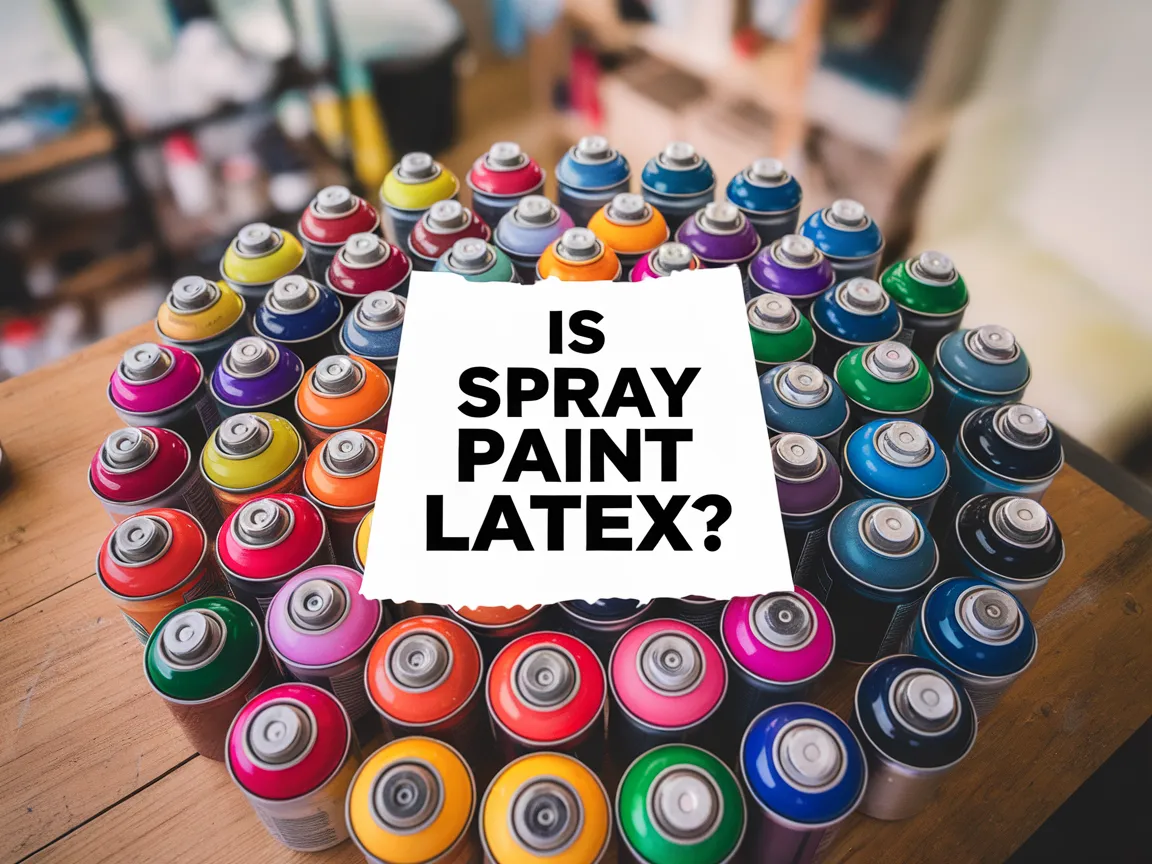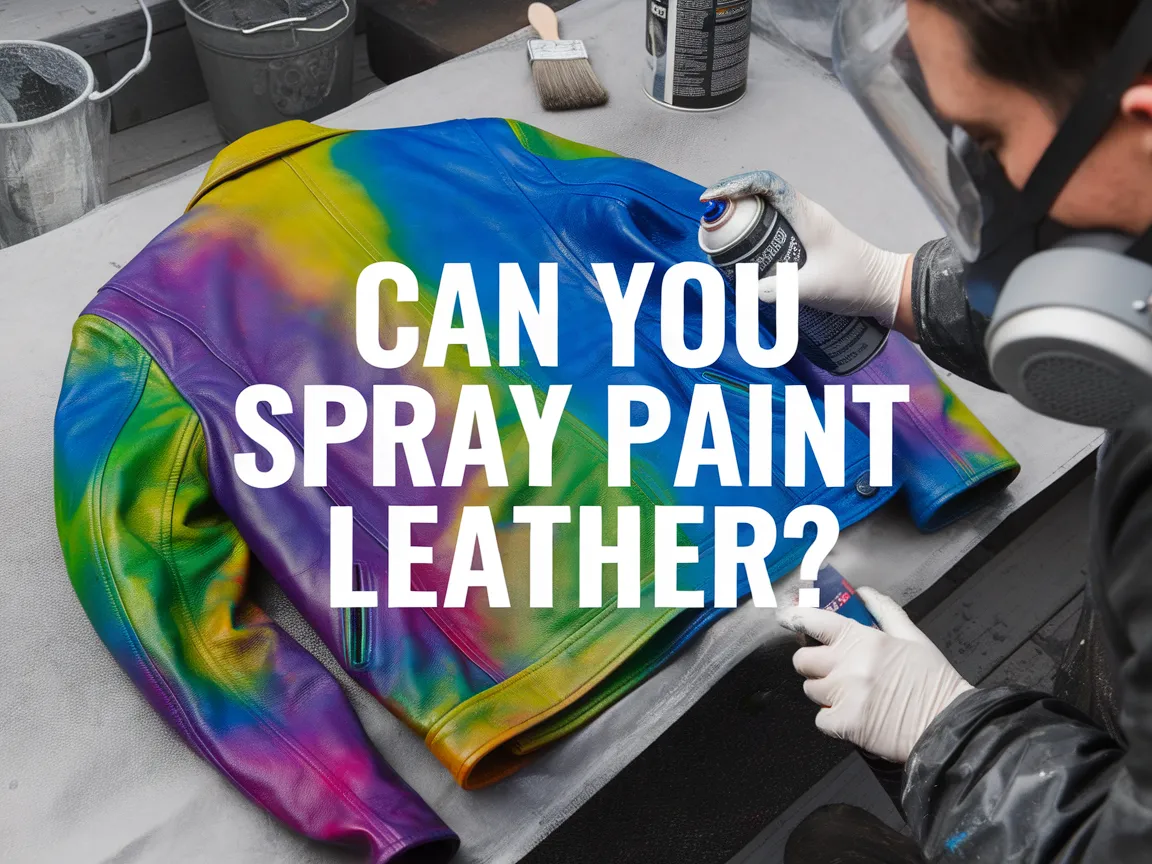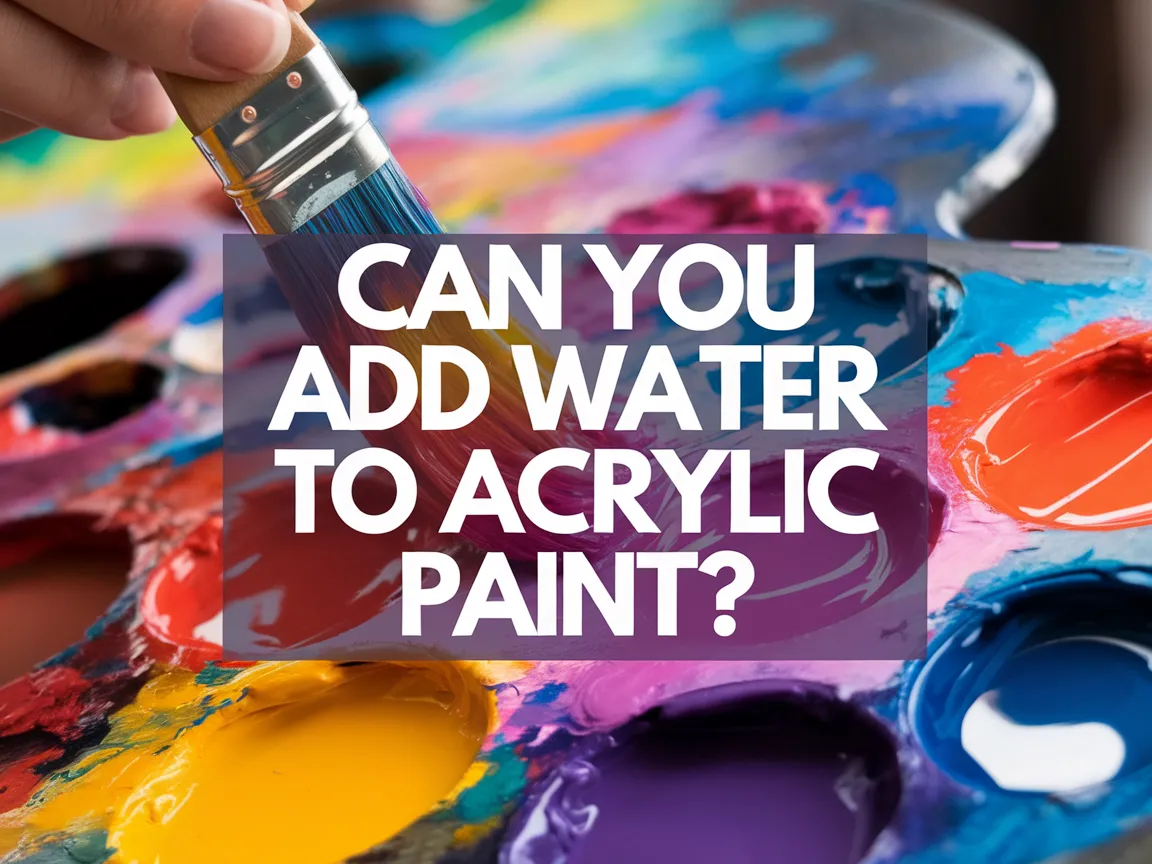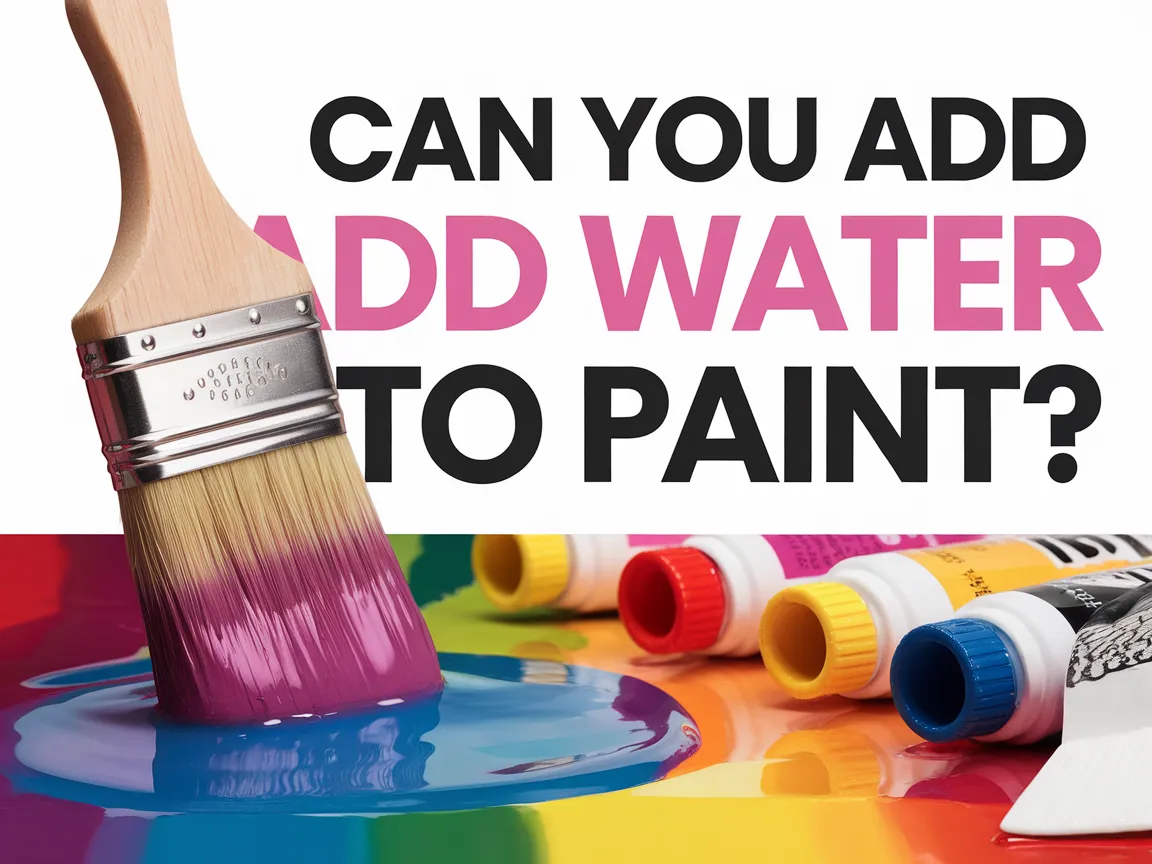What is Iridescent Paint?
Published on: October 1, 2025 | Last Updated: October 1, 2025
Written By: Isabella Cruz
Iridescent paint is like magic in a bottle. It changes colors when you look at it from different angles, pretty cool, huh?
So, what is iridescent paint? It’s important because it adds a unique sparkle to your projects. I remember using it for the first time on a canvas, and it completely transformed my artwork; I could never go back!
In this guide, you’ll learn about the features of iridescent paint, steps to apply it, the best color combos, types available, common challenges, finishing touches, and creative DIY ideas. Get ready to discover how to add sparkle to paint and more!
Contents
- 1 What is Iridescent Paint?
- 2 Understanding the Characteristics Of Iridescent Paint
- 3 Before You Start Using Iridescent Paint
- 4 Steps for Applying Iridescent Paint
- 5 Recommended Color Palette for Iridescent Paint Projects
- 6 How Does Iridescent Paint Work?
- 7 Applications of Iridescent Paint in Different Industries
- 8 Different Types Of Iridescent Paint Available
- 9 Factors Affecting the Performance Of Iridescent Paint
- 10 Common Issues Encountered When Using Iridescent Paint
- 11 Finishing Touches to Your Iridescent Paint Project
- 12 Creative DIY Project Ideas Featuring Iridescent Paint
- 13 Frequently Asked Questions About Iridescent Paint
- 14 Conclusion
- 15 Useful Resources
What is Iridescent Paint?
Iridescent paint is a unique type of paint that shifts colors when viewed from different angles. It contains special pigments that reflect light, giving surfaces a shimmering effect. Think of it as adding magic to your walls! Perfect for creating eye-catching art.
Understanding the Characteristics Of Iridescent Paint
Iridescent paint contains tiny pigments that reflect light, creating a shifting shimmer. The particles, often less than 10 micrometers (Μm) in size, produce various color hues when viewed from different angles.
The Finishing Touch
A freshly painted wall is a blank canvas. The best way to bring your room to life is with a single piece of statement art that ties everything together.
Browse Wall Art at Big Wall DecorSo, what is iridescent paint? It’s your go-to choice for adding a sparkling finish to surfaces. I remember my first encounter with it at an art show—the way light danced on a painted canvas blew me away! Interestingly, the history of shimmering pigments stretches back further than most realize, with ancient artists experimenting with early iridescent painting techniques.
I’ve seen a friend use it for accent walls, and it transformed the whole room. Want a cool effect? You can explore how to add sparkle to paint; it’s all about layering paint to achieve that desired iridescent shine.
Before You Start Using Iridescent Paint
What do you need to get started?
- Iridescent Paint: You’ll need a specific brand, such as Pebeo Studio Acrylics Iridescent Paint. This paint adds a shimmering effect to surfaces.
- Paint Palette: A well-structured palette, like Masterson’s Palette Seal, is essential. It keeps paint from drying out and maintains your colors’ vibrancy.
- Brush Set: Get a set that includes fine-tipped and flat brushes, such as Royal & Langnickel’s Comfort Grip Brush Set. Different brushes enable precise application and broad strokes.
- Sealer/Topcoat: Use Rust-Oleum Clear Matte Sealer to protect your iridescent finish from scratches and fading.
We covered important tips for using iridescent paint. We will now cover the steps for applying iridescent paint.
Also See: Can You Put Face Paint on Your Lips? Yes, With Care!

Steps for Applying Iridescent Paint
Now, we’ll outline the steps to effectively use iridescent paint to enhance your surfaces.
-
Prepare Your Surface
Start with a clean, dry surface. Dust, grease, or old paint can interfere with adhesion. Use a damp cloth or light sanding with about 320-grit paper to ensure a smooth finish.
Don’t skip this step; proper preparation can make a significant difference. A smooth base helps the iridescent effects shine for a stunning look.
-
Select the Right Tools
Choose high-quality brushes or sponges designed for iridescent paint. A foam brush is great for even coating, while a fine-bristle brush works well for detailed areas.
Consider using a roller for flat surfaces to speed up the process. For precision, use small brushes—it’s all about the details.
-
Mix the Iridescent Paint Well
Before application, mix the paint thoroughly to redistribute the pigments. Stir for at least 2 minutes for an even blend. Test the paint’s consistency; it should flow well but not be too thin.
If the finish isn’t sparkly enough, add clear gloss medium to enhance shine. Don’t rush; well-mixed paint can elevate your project significantly.
-
Apply Base Coat (if Needed)
If you want a deeper tone beneath your iridescent topcoat, apply a base coat first. Choose a color that complements your iridescent shade; for example, dark blue pairs well with light green iridescent.
Let the base dry completely—at least a few hours—before proceeding. This is crucial to prevent mixing, which can dull the finish.
-
Apply Iridescent Paint
Apply the iridescent paint in even strokes, using the method that’s comfortable for you. Apply light layers; multiple thin coats yield a better finish than a thick one.
For large areas, a roller can speed up the process, but always go back to touch up with a brush. Remember: layer thin and let dry between applications—two to three coats will give you that dazzling effect!
So far we covered the process of using iridescent paint. Let’s look at suggested color combinations for your projects next.
The Finishing Touch
A freshly painted wall is a blank canvas. The best way to bring your room to life is with a single piece of statement art that ties everything together.
Browse Wall Art at Big Wall DecorRecommended Color Palette for Iridescent Paint Projects
I suggest the “Mystical Ocean” theme for your iridescent paint projects, blending vibrant shades that recreate the essence of an enchanting underwater world.
| Color Box | Hex Code | Color Name |
|---|---|---|
| #0077BE | Ocean Blue | |
| #00BFFF | Cyan | |
| #F0E68C | Light Khaki | |
| #FFD700 | Gold |
We’ve wrapped up the recommended color palette for iridescent paint projects here. Let us turn our attention to how iridescent paint works.
How Does Iridescent Paint Work?
Let’s dive into the science behind iridescent paint and how it creates its stunning effects.
The Role of Light and Pigments
Two main factors drive the magic of iridescent paint: light and special pigments. These pigments have unique properties that reflect light in different ways.
- Reflective Pigments: Tiny particles, like mica or glass, reflect light. When light hits them, it refracts and scatters, resulting in shimmering colors.
- Angle of Viewing: The angle from which you see the surface changes how the colors appear. This shifting effect creates that magical aura—sometimes it looks blue, sometimes green, depending on your position!
Understanding Color Shift
Ever wonder why some iridescent paints look so different in bright light versus dim light? That’s all about the color shift! Let’s break it down:
| Light Condition | Color Viewed | Example Use |
|---|---|---|
| Bright Daylight | Vivid Blues and Greens | Outdoor Murals |
| Dim Light | Muted Purples and Blacks | Indoor Decor |
| Artificial Light | Warm Golds and Coppers | Tabletops and Art Pieces |
By understanding these effects, you’ll know the best places to showcase your iridescent projects. It’s pretty amazing how light can change everything!
So far we covered the mechanics of iridescent paint. Let’s look at its applications across various industries next.

Applications of Iridescent Paint in Different Industries
Iridescent paint isn’t just for walls; it shines in a variety of industries. Let’s explore where it’s commonly used.
Art and Decor
From canvas paintings to decorative home items, iridescent paint adds a unique flair. Artists value its ability to create depth and movement in their works.
Fashion Industry
- Textiles: Designers incorporate iridescent paint on fabrics for a shimmering effect, enhancing haute couture collections.
- Shoes and Accessories: Sneakers and bags often feature iridescent elements, attracting eye-catching reactions.
Automotive Finishes
Car manufacturers use iridescent paint to give vehicles a distinctive look. This enhances aesthetics and creates a unique selling point.
Packaging and Branding
- Luxury Products: Iridescent paint on packaging elevates brand perception, making products more appealing.
- Cosmetics: Brands often use it in makeup packaging for that touch of glamour, aiming to attract consumers.
Interior Design
Iridescent paint is chosen for accent walls and furniture, adding interest and sophistication to any space. It can completely transform a room’s ambiance.
| Industry | Common Uses | Benefits |
|---|---|---|
| Art and Decor | Canvas paintings, home decor | Creates depth and movement |
| Fashion | Textiles, accessories | Attracts attention; enhances style |
| Automotive | Vehicle finishes | Unique designs; increases appeal |
| Packaging | Luxury and cosmetic packaging | Boosts brand image; eye-catching |
| Interior Design | Accent walls, furniture | Transforms space; adds sophistication |
Different Types Of Iridescent Paint Available
Let’s explore the various types of iridescent paint: Pearlescent, Glitter, Metallic, and Color-Shifting.
-
Pearlescent
Pearlescent paint mimics the luster of natural pearls. It reflects light at different angles, creating a shiny, soft finish.
-
Glitter
Glitter paint contains tiny particles that catch the light, adding sparkle to your walls. This type comes in various sizes and colors for different effects.
-
Metallic
Metallic paint gives surfaces a shiny, reflective quality similar to polished metal. It often contains real metal particles to boost its reflective properties and can be particularly striking.
-
Color-shifting
Color-shifting paint changes colors with varying light angles. This effect is created by adding special pigments that provide depth and movement.
I learned a valuable lesson when mixing Pearlescent paint with a matte base. The combination created an unexpected, stunning effect that enhanced my project!
The Finishing Touch
A freshly painted wall is a blank canvas. The best way to bring your room to life is with a single piece of statement art that ties everything together.
Browse Wall Art at Big Wall DecorFactors Affecting the Performance Of Iridescent Paint
What factors influence how iridescent paint looks and performs?
-
Particle Size: Smaller particles enhance sparkle and create a smoother finish.
-
Light Angle: The angle of light affects color shifts, impacting visual appeal.
-
Base Color: The color beneath the iridescent layer can dramatically change its look.
-
Application Technique: Techniques like layering or blending affect depth and brightness.
Common Issues Encountered When Using Iridescent Paint
Last summer, my friend mixed her iridescent paint poorly, resulting in clumps that ruined her art. Use a paint strainer to avoid that mess!
When applying iridescent paint, keep the layer thickness around 2 mils (0.05 Mm). Use a foam roller for an even finish. Always test before committing!
Finishing Touches to Your Iridescent Paint Project
After understanding iridescent paint properties, keep your surfaces clean with a pH-neutral cleaner like Simple Green. Seal with a clear coat spray, such as Krylon Crystal Clear, after 24 hours for protection. If you’re planning a larger painting project and want to budget accurately, check out the average cost of exterior painting.
Inspection is vital for iridescent paint. Check color transitions and shimmer evenly across surfaces (E.g., At Least 4 in (10 Cm) apart) for optimal effects and consistency.
Here’s an insider tip: Mix iridescent paint with an acrylic medium at a maximum 2:1 ratio for smoother application and enhanced sheen that lasts longer than others.
Creative DIY Project Ideas Featuring Iridescent Paint
How about creating some dazzling iridescent coasters? Or, you could jazz up a plain lamp with an iridescent paint job that dazzles under any light!
For the coasters, grab some cork, iridescent paint, and a sealant. It’ll set you back around $15 and take about two hours, including drying time. As for the lamp, just a coat of paint can work wonders, maybe $20 for materials and a couple of hours of fun DIY time.
If you’re looking for alternatives to “what is iridescent paint,” why not try a mix of metallic and clear paint for a custom effect? Or, blend some fine glitter into regular paint to add your personal touch and achieve that sparkle you crave! When experimenting with paint techniques, it’s crucial to know how to protect your clothing from paint stains.
Frequently Asked Questions About Iridescent Paint
What Surfaces Can Be Painted With Iridescent Paint?
Yes, you can paint various surfaces with iridescent paint. It works well on wood, canvas, ceramic, and metal. Different surfaces can absorb and reflect paint differently, giving unique effects based on your choice.
How Long Does Iridescent Paint Take to Dry?
Iridescent paint generally takes about 1 to 2 hours to dry to the touch but can require up to 24 hours for complete curing. Dry times depend on factors like humidity, temperature, and the thickness of the layers, so adjust accordingly. If you encounter any paint removal challenges during your project, you might want to explore effective paint removal techniques.
Can Iridescent Paint Be Used Outdoors?
Yes, you can use iridescent paint outdoors, but ensure it’s specifically labeled for exterior use. Outdoor-grade formulations withstand weather conditions better, keeping your vibrant projects looking fresh for longer. If you’re working with ABS plastic surfaces, you’ll want to prepare the surface correctly before painting.
How Do I Clean Brushes After Using Iridescent Paint?
Cleaning brushes after using iridescent paint is straightforward. Simply wash them with warm soapy water immediately after use. This prevents the paint from drying and ruining your brushes, ensuring they stay in great shape. Professional artists often develop specific techniques for maintaining pristine painting tools.
Is Iridescent Paint Safe for Kids’ Projects?
Yes, iridescent paint is safe for kids’ projects, provided you choose non-toxic brands. Always check labels, especially for projects involving younger children, to ensure safety during artistic fun.
Can I Mix Iridescent Paint With Other Paints?
Absolutely, you can mix iridescent paint with other acrylic paint mediums! This allows you to create unique hues while maintaining sparkle. Mixing can result in endless color combinations and sparkly effects. If you’re looking to expand your painting techniques, painting aluminum surfaces requires specific approaches.
How Do I Apply Iridescent Paint for Best Results?
For the best results, apply iridescent paint in thin, even layers using a brush or roller. Build up multiple layers if you want a more intense effect. This technique enhances both the iridescence and richness of your colors. If you’re curious about creating specific paint colors like blue, you can explore techniques for mixing blue paint.
Conclusion
I hope this was worth your while. We covered what iridescent paint techniques are, its unique characteristics, tips on application, a recommended color palette, different types available, performance factors, common issues, finishing touches, and creative DIY ideas.
So, what is iridescent paint? In simple terms, it’s a paint that shimmers and changes color when viewed from different angles, adding depth and visual interest to surfaces. You can learn how to add sparkle to paint or how to glitter paint a wall through careful application and choosing the right type.
For more expert guidance and inspiration, visit Paint Answers.
Useful Resources
- Loomis, A. (2011). Figure Drawing for All It’s Worth. New York, NY: Titan Books.
- How to Use Iridescent Medium to Make Your Acrylic Paintings Pop — EttaVee
- U.S. Art Supply Professional 12 Color Set of Iridescent Acrylic Paint, 75ml Tubes – Luminescent Special Effect Chameleon Color-Shifting Pearl Colors
Isabella is a Filipino-American art writer and critic specializing in contemporary painting, blending her Filipino heritage with global art trends. She holds a BFA from California State University, Long Beach, and a Minor in Art History from the University of the Philippines. Isa has experience as a Gallery Assistant, Art Appraisal Specialist, and Social Media Creative for Art & Design.
Acrylic, Medium









